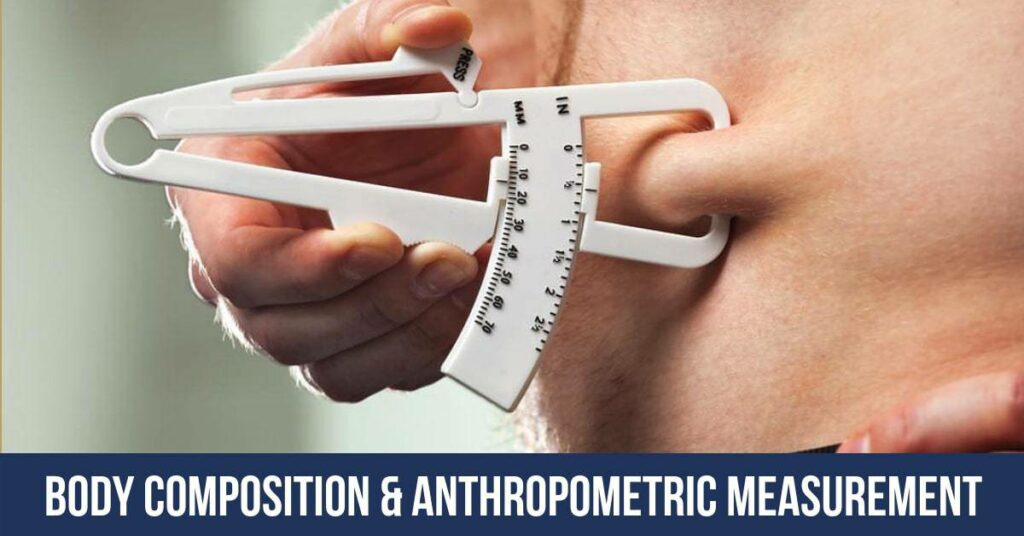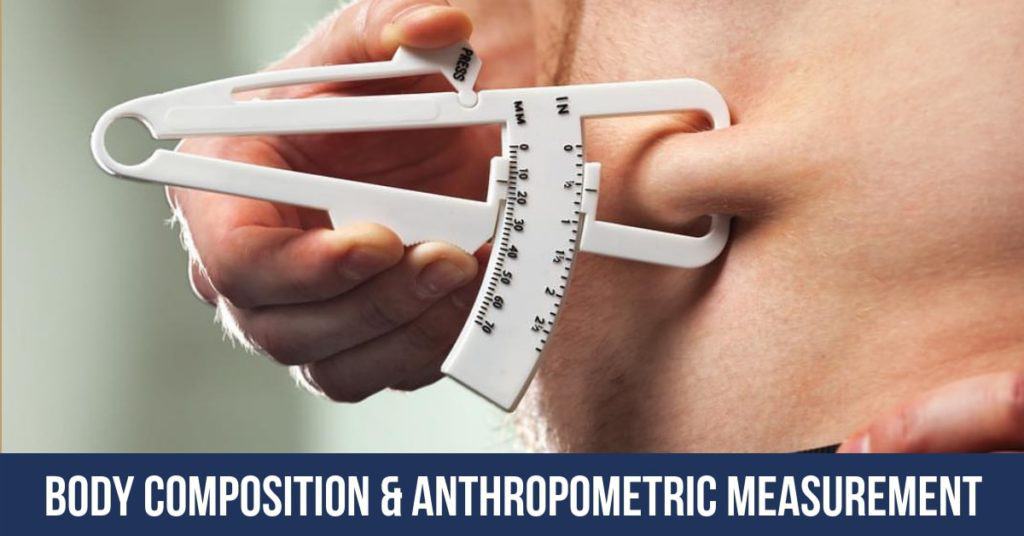Sizing things Up: Body Composition and Anthropometric Measurement
Along with the number on the scale, progress of nutrition and exercise interventions can be evaluated using changes in body composition. Oftentimes, body measurements and proportions of lean and fat mass can shift while weight remains relatively unchanged. For this reason, it is important to evaluate body composition and use baseline measurements to track progress. Furthermore, accurate body composition assessment can be indicative of overall health and performance.
Anthropometry: Measurement of body size, weight, and proportions
The gold standard tools for body composition would be DEXA scans, Bod Pod and underwater weighing, but since these methods can be labor intensive and require extremely expensive equipment, they are not commonly used in practical settings. There are several ways to measure and assess an individual’s body composition. Each method provides a varying amount of accuracy and convenience; depending on the setting, one tool may be used over another. These tools can be especially valuable to an athletic population. Since no one measure should be used alone, any of them along with weight can help provide a more realistic representation of how an athlete is progressing.
This section will discuss some of the most commonly used methods used to assess body composition and the pros and cons of each.
Body Mass Index
Body Mass Index (BMI) is simply a ratio of weight to height. It is useful for baseline measurements, to categorize individuals in underweight, overweight and obese weight classes (see Table 8.1) and is used as a screening tool to assess risk for particular diseases.
Some quick math is all it takes to calculate (see Figure 8.1) but BMI alone is not a good indicator of body composition because it does not distinguish between lean body mass and fat mass. If weight increases due to muscle gain (which is common for athletes), BMI will increase, possibly to the point where it will categorize the athlete as “obese.”
Strengths
- Easy to calculate
- Quick
- Affordable
Limitations
- Does not distinguish between fat and lean body mass
Body Mass Index (BMI)
- Weight (kilograms) ÷ [Height (meters)]²
- [(Wt in pounds)÷ (Ht in inches)² x] 704.5
Conversions:
- 1 inch = 0.0254 meters →(inches x 0.0254)
- Pounds →Kilograms (lbs ÷2.2)
BMI Categories
- Underweight = <18.5
- Normal weight = 18.5-24.9
- Overweight = 25-29.9
- Obese = 30.0+
Skinfold thickness and bioelectrical impedance analysis (BIA) are two of the most commonly used techniques to determine how much of the body is made up of lean versus fat mass. While neither is without error, these methods can be more reliable than some other options, assuming they are properly executed. Research supports that increased percent body fat corresponds with decreased endurance and performance.
Percent Body Fat
Skinfold Thickness
Skinfold thickness assessments are made by using special calipers to measure amounts of subcutaneous fat at specific sites on the body. The measurements are then plugged into an age and gender-specific equation to yield a percent body fat result. Even though the measurement sites are very specific, it may be difficult to get consistently reliable results. Factors like distribution of body fat and improper use of calipers can interfere with accuracy. The good news is with continued use of calipers, testers can become more accurate. Research supports that skinfold tests can provide accurate info, especially for lean individuals like many athletes.
Strengths
- Affordable
- Tester reliability can improve with practice
- Quick
Limitations
- Body fat distribution varies
- Can be difficult to get accurate, consistent measurements
Bioelectrical Impedance Analysis
BIA measures resistance to electric current within the body to assess total body water content versus lean mass and body fat. Athletes are connected to the analysis machine by leads that send an electric current through the body. The more the current is slowed (or “impeded”), the higher the percent body fat. Reliability of BIA has been questioned but sound research has demonstrated that it can be a useful and reliable tool to assess athletes’ body composition.
Strengths
- Quick
- Easy to operate
Limitations
- More expensive
- Accuracy has been questioned
Hip and Waist Circumference
Girth measurements taken at the hips and waist are good indicators of body fat distribution. They can be an easy way to track the progress of nutrition and exercise intervention. Measurements are made with a tape measure at the umbilicus as well as the widest part of the hips (horizontally across the gluteals). It is important that these measurement sites be as consistent as possible to ensure accuracy. This method is a simple way to track changes in physical structure. Since the hips and abdomen are common sites of fat storage, changes may also indicate a change in body fat. Since this method does not account for changes in fat versus lean body mass, measures should be used along with additional methods to track progress.
Strengths
- Easy to calculate
- Quick
- Affordable
Limitations
- Measurement sites must be consistent for accuracy
- Does not distinguish between fat and lean body mass
Learn more in the Fitness Nutrition Coach program, and the Sports Nutrition Specialist program.







